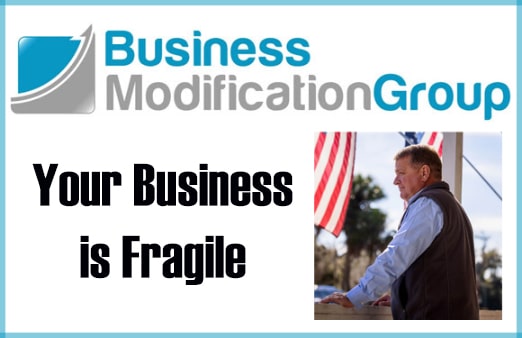
The U.S. Service industry is facing its sharpest contraction in over four years. According to research from the Institute for Supply Management, the Services PMI has recently fallen to 48.8% and shows no immediate signs of improvement. Global competition, price deflation, and rising commodity costs have all played a part in creating a fiercely competitive landscape, which has left service organizations feeling the pinch. Servitization is emerging as a strategic priority to generate new revenue streams, but to work Mark Brewer, VP of Service Industries at IFS, explains it needs an essential ingredient: Closed-Loop Lifecycle Management!
The shift to value-added, outcome-based services is how organizations can meet today’s customer expectations and stand out from their competitors—but it’s not a simple strategy to implement. Servitization success requires organizations to incorporate closed-loop lifecycle management (CLLM) into their business models in order to achieve service excellence.
Servitization focuses on the importance of service operations to drive value for customers and generate sustainable revenue streams, with data playing a key part. CLLM provides a holistic business perspective on how to track and manage activities and opens up lucrative opportunities for companies to get real value out of their servitization journey.
To achieve this new level of servitization success, CLLM requires businesses to have a complete view of the organization—including customers, assets, and resources, as well as product and service offerings. This approach essentially brings together the three main lifecycle management processes—product lifecycle management (PLM), asset lifecycle management (ALM), and service lifecycle management (SLM)—to optimize product design, asset performance, and service execution.
When correctly executed, a closed-loop lifecycle allows businesses to improve operational efficiency, customer satisfaction, and revenue growth. A win-win for businesses trying to differentiate themselves from competitors who rely on price and are in danger of being commoditized
Remember the ‘serv’ in servitization…
In the past, most iterations of CLLM have focused on integrating asset and product lifecycle management but this only scratches the surface of what a closed loop approach can do.
Service excellence is possible when an organization ensures customer expectations are consistently met and maintained—and this is where service lifecycle management comes in to help businesses set clear expectations, monitor service performance, and proactively address any issues both holistically and in real time.
From customer service to installation and Everything-as-a-service (XaaS), service lifecycle management opens the door to new revenue streams and gives organizations complete control over the innovations required for servitization. The opportunities are there—for example, the XaaS market size alone is projected to grow to USD 3,221.96 billion by 2030, with North America dominating the global market. CLLM will enable companies to spot them.
… but don’t get lost in the data
Service lifecycle management requires companies to go beyond tracking data and instead focus on actionable insights. A business able to successfully integrate this management approach into workflows can track and manage customers issues, efficiently schedule and dispatch service teams, and deal with service requests quickly and effectively. This allows businesses to identify potential risks in advance and have multiple solution options.
The ability to analyze data from all connected products throughout their lifecycle and track maintenance is equally important to service lifecycle management. For instance, a birds-eye view of the entire process allows businesses to track key performance indicators with ease and make continuous improvements. This helps organizations guarantee uptime and ensure clients are ahead of any potential issues.
Bringing it full circle with closed loop servitization
Understanding everything that happens with customers, assets, and resources allows businesses to deliver exactly what clients need, exactly when they need it—and CLLM is key to this outcome, but the journey to servitization doesn’t stop here:
- Close the loop with AI
CLLM requires vast amounts of data and when companies start including new service models, the information only grows. Companies able to build AI technologies into servitization strategies from the start can then harness data and make it work for them. For instance, AI can automate certain servicing tasks (such as recommending adding certain parts or determining a first-time fix probability), which frees up technicians to focus on more complex issues and improve efficiency. This is critical when businesses want to scale services without increasing the workforce—and it certainly has clear benefits during the current labor shortages.
Fully-integrated AI can personalize services based on individual customer needs and preferences. For example, AI can analyze customer data and behavior to make recommendations and suggestions for services that would best benefit each customer. This creates a more proactive, personalized and tailored experience, which helps organizations increase customer satisfaction and loyalty.
- Embrace service maturity
It is important for businesses to prioritize training and upskilling opportunities which help employees understand the data coming from CLLM and how it impacts customer service, technical support, and general service management. This is the very essence of Closed-Loop. Service performance metrics, such as customer satisfaction scores, service response times, and first-time fix rates, can also help businesses precisely pinpoint areas of improvement such as training gaps or areas to invest further in knowledge articles.
A service portfolio comprised of preventative maintenance, repairs, and training programs provide a new level of adaptability that ensures services meet different customer needs.
- Level-set expectations with clear service agreements
Service contracts are one of the most important tools in the servitization journey. Contracts shift the focus from product sales to customer outcomes, helping businesses drive revenue and build customer loyalty. Here it is important to make sure contracts align with what customers are looking for, whether this be uptime guarantees, productivity improvements, or cost savings. For the first time, you can be focused and incentivized on the very same thing.
Service level agreements built into contracts can ensure performance standards. These are crucial for businesses and customers as they outline expectations and provide accountability—both attractive factors to build customer loyalty.
But don’t forget to make contracts easy to understand and transparent as customers should have a clear understanding of what is included.
The open road to servitization
A CLLM strategy, which brings together the three essential lifecycle processes for products, assets, and services, will help organizations start from the ground up to transform customer interactions and reap the rewards of this change.
With a clear picture of customers, assets, and resources, organizations can truly drive toward the perfect servitization strategy to adapt to new market demands, create more sustainable partnerships, and open up new revenue opportunities that would otherwise have gone unnoticed. CLLM supported by business data puts the focus on value creation, the essential ingredient in any company’s roadmap.








